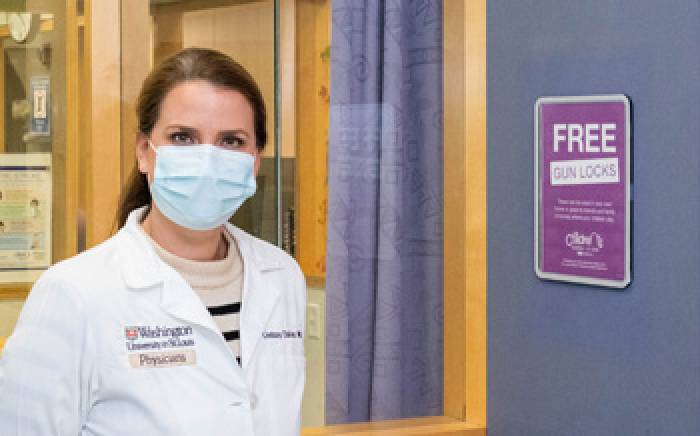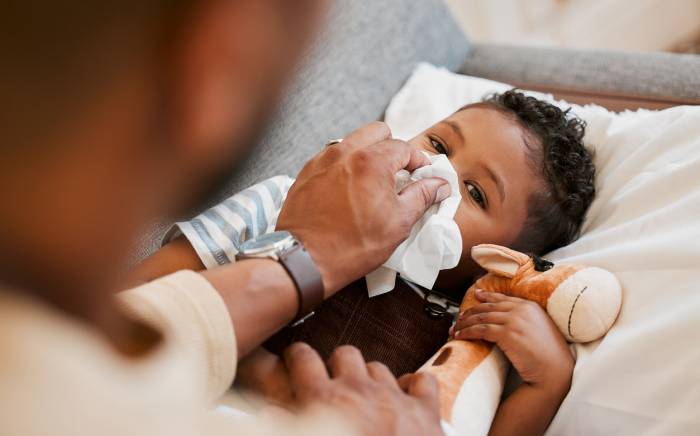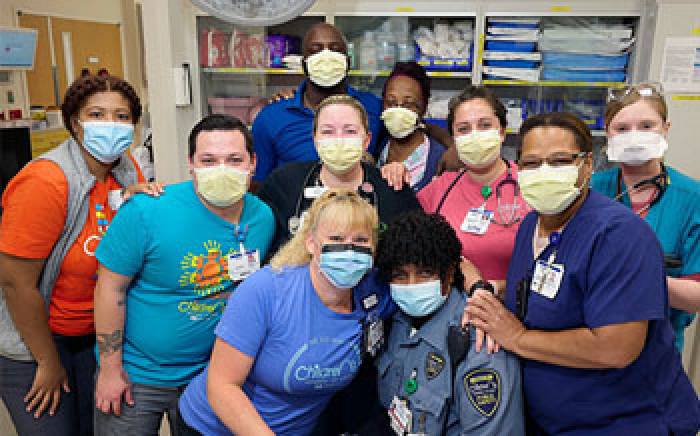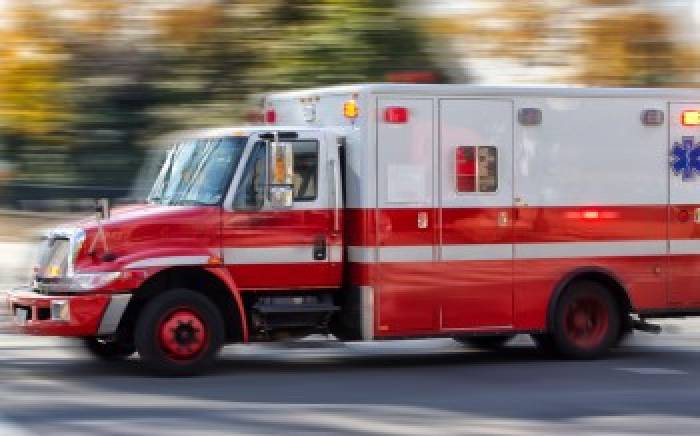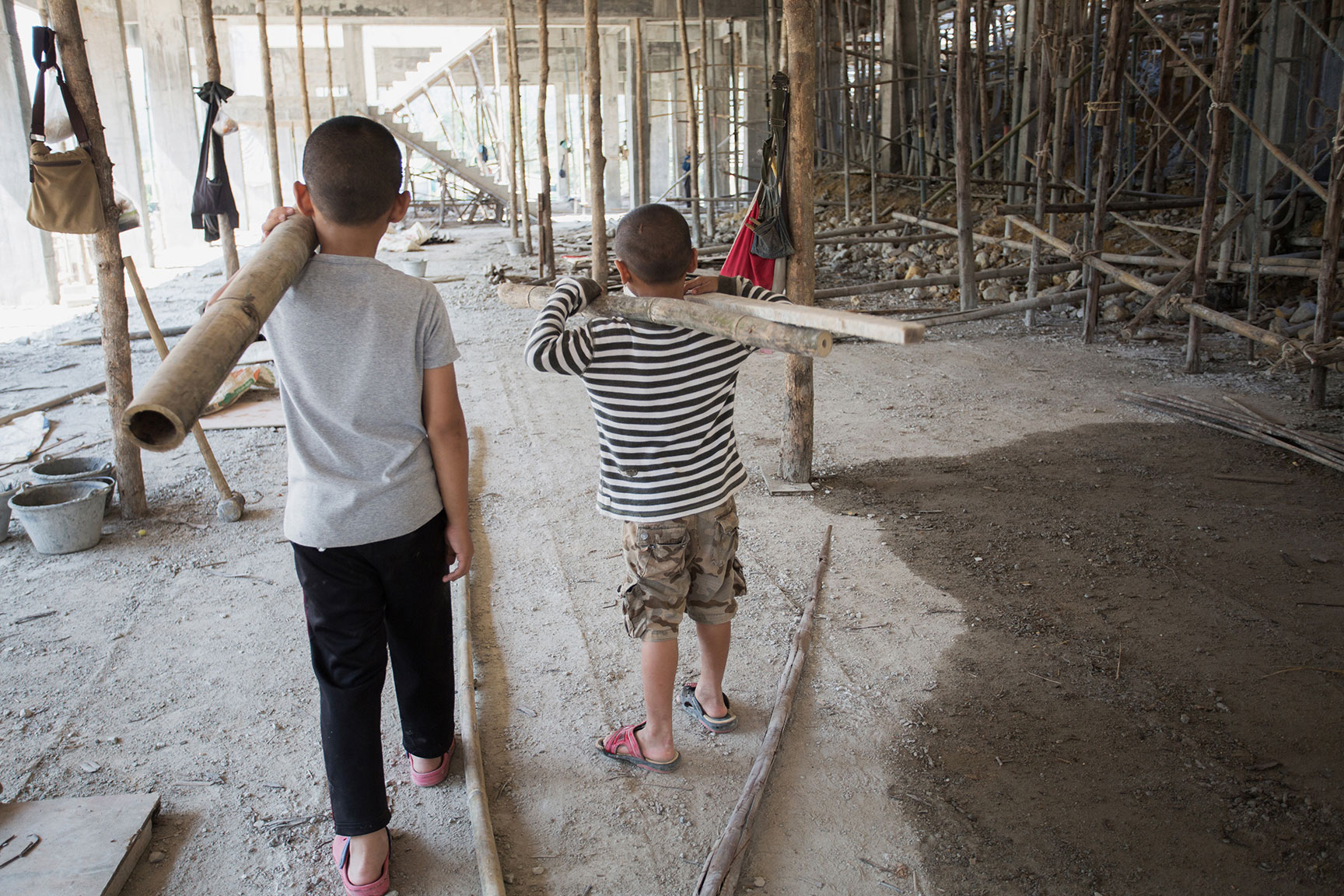
I often encounter emergency department (ED) visits for complaints about foot injuries from stepping on a nail or other sharp objects, whether it is kids playing inside the home in the basement, in the yard or out on walks. Puncture wounds to the foot are painful. Some people focus on the pain and take medicines to relieve it but forget about other aspects of caring for these injuries, such as bacterial infections, including tetanus, from puncture wounds.
Here are a few tips on how you can help your child manage and avoid complications caused by a puncture wound.
- Local wound care: Wash the wound well immediately. It is important to first clean your hands with soap and water and then use soap and water to clean the wound as soon as possible. Make sure you clean off any dirt or fabric that is attached to the wound. Use tweezers to remove any accessible splinters or fabric that could have entered the wound from shoes or socks. Apply pressure to stop bleeding and topical antibiotic ointment. Keep the wound covered with a bandage to prevent bacterial infections. Clean the wound and repeat local care daily until it has healed.
- Tetanus prophylaxis: This is one of the most important aspects of treating a puncture wound. Even if your child is up to date on their vaccinations, some puncture wounds, especially from rusty metals or sharp objects contaminated with soil or fecal matter, may qualify as dirty puncture wounds. These puncture wounds require an additional tetanus booster if more than five years have passed since the child's last tetanus vaccination. The normal recommendation for tetanus boosters is once every 10 years for children who have received their tetanus booster at age 11. It is important to get the tetanus booster, if needed, within 48 hours of the puncture wound. Tetanus is a bacterial infection that affects the central nervous system with a high rate of morbidity and mortality in unimmunized or inadequately immunized individuals.
- Other bacterial infections: Most superficial puncture wounds heal well with local wound care. If the wound shows signs of increasing redness, warmth, swelling, pain or discharge, you should contact your doctor immediately. The wound might need to be treated with oral, or sometimes intravenous, antibiotics. Puncture wounds can develop complications such as local cellulitis of the skin and underlying tissues or more severe infections involving the nearby joints and bones (septic arthritis and osteomyelitis).
- Psuedomonas bacterial infections: There is a particular type of bacteria called Pseudomonas aeruginosa that can thrive in the soles of sneakers and sandals. When a sharp object like a nail goes through the sole of footwear, it can introduce these bacteria into a puncture wound and cause serious bone infection. These wounds will need prompt and aggressive treatment with intravenous antibiotics. Worsening local wound symptoms, joint pain and fever should be promptly evaluated by a doctor.
- ED or not the ED? Most superficial puncture wounds can be cleaned at home immediately, and you can see your child's doctor or visit an urgent care the same day or next to check if they need a tetanus booster or oral antibiotics. However, if you notice persistent bleeding, severe pain, a lodged foreign body, deeper injuries to the bone or other complicated puncture wounds, it is necessary to be seen in the ED immediately.
Puncture wound treatment includes routine wound care, tetanus prophylaxis and monitoring your symptoms. If you are concerned about your child’s symptoms, you should see a doctor immediately. Puncture wounds can be painful and sometimes take up to two weeks for the pain, local redness and swelling to resolve. An over-the-counter medication for pain, such as ibuprofen, is helpful.
Washington University Children's After Hours locations provide convenient medical care for your child's illnesses and injuries as a faster alternative to the ED when your pediatrician's office is closed. In most cases, children can be seen here or in a BJC Medical Group Convenient Care, rather than in the ED.
St. Louis Children's Hospital has six pediatric emergency department locations across the St. Louis and southern Illinois region. These include St. Louis Children's Hospital, Children's Hospital at Memorial Hospital Belleville, Children's Hospital at Memorial Hospital Shiloh, Children's Hospital at Missouri Baptist Medical Center, Children's Hospital at Northwest HealthCare and Children's Hospital at Progress West Hospital.

Shobha Bhaskar, MD, is a pediatric hospitalist with St. Louis Children’s Hospital and Washington University School of Medicine, who also sees patients at Children’s Hospital facilities at Missouri Baptist Medical Center and Progress West Healthcare.




